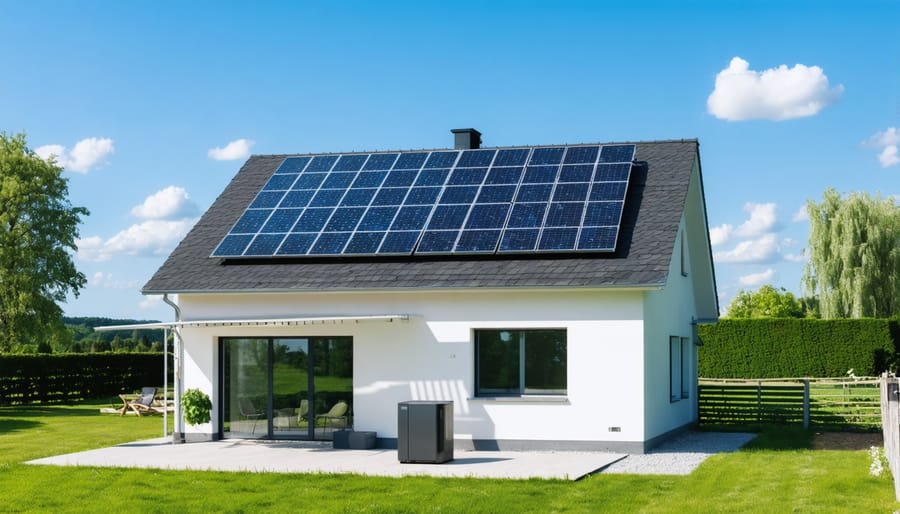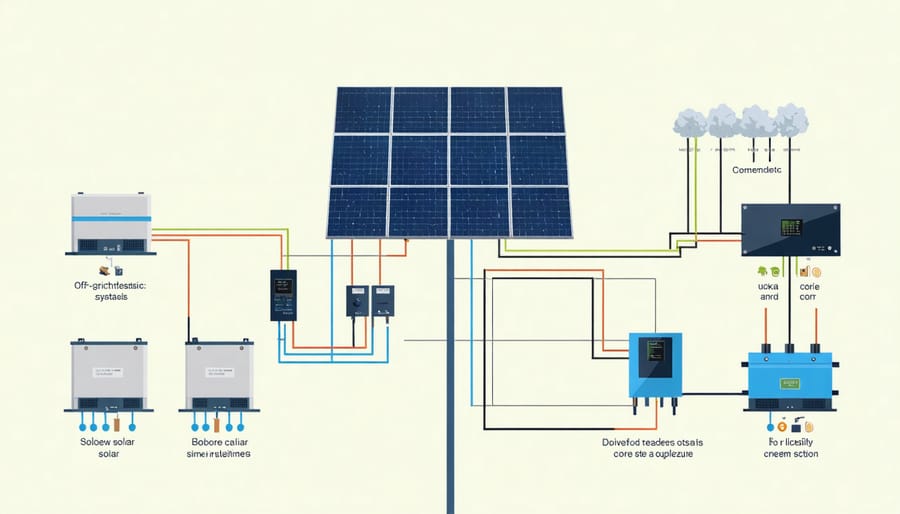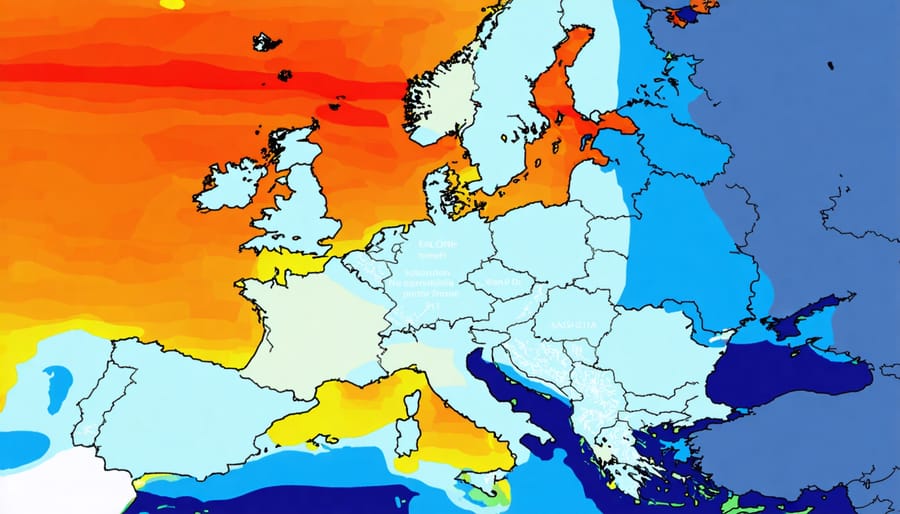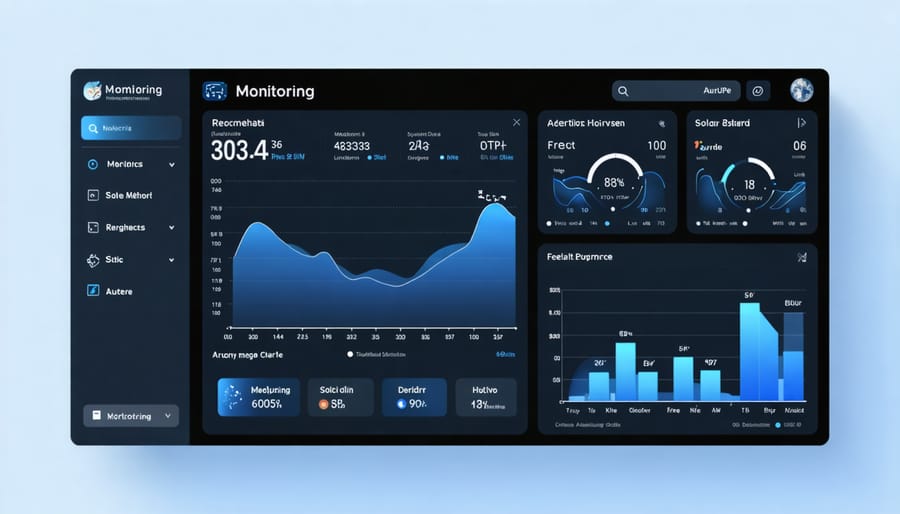Solar Off-Grid Design: Power Your European Property Without Grid Dependency

Transform your energy independence dreams into reality through expert designing an off-grid solar system that perfectly aligns with European regulations and climate conditions. Modern off-grid solar design integrates cutting-edge battery technology, smart load management, and precision-engineered components to create sustainable power solutions that operate independently from traditional utility grids.
The evolution of solar technology has revolutionized how European properties harness renewable energy, making complete energy autonomy not just possible but increasingly practical. From remote Alpine chalets to urban eco-homes, properly designed off-grid systems now deliver reliable power while maintaining crucial backup capacity for extended periods of overcast weather.
This comprehensive approach to energy independence requires careful consideration of daily consumption patterns, seasonal variations, and future expansion possibilities. Professional system design ensures optimal component sizing, seamless integration, and compliance with local building codes while maximizing return on investment through enhanced system efficiency and longevity.
Join the growing community of energy-independent Europeans who have embraced the freedom of off-grid living through intelligent solar system design. Whether powering a holiday home or establishing a self-sufficient business, the path to energy autonomy starts with proper planning and expert guidance.

Core Components of Modern Off-Grid Solar Systems
Solar Panel Arrays and Mounting Solutions
In European climates, selecting the right solar panels and mounting solutions is crucial for optimal system performance. Monocrystalline panels are particularly well-suited for northern European regions, offering superior efficiency in low-light conditions and during shorter winter days. These panels typically deliver 15-22% efficiency, making them ideal for maximising limited roof space.
For mounting solutions, pitched roof installations remain the most common in residential applications, utilizing either on-roof or in-roof systems. The choice between these depends on factors like roof type, local building regulations, and aesthetic preferences. Ground-mounted arrays present an excellent alternative for properties with adequate land space, offering easier maintenance access and optimal angle adjustment capabilities.
Panel sizing should account for both current energy needs and future expansion possibilities. For European installations, we typically recommend oversizing the array by 10-15% to compensate for reduced winter production. Mounting systems must be rated for local wind and snow loads, with particular attention to coastal areas where corrosion resistance is essential. Anti-theft fixtures and micro-inverter compatibility should also factor into mounting system selection.
Energy Storage Systems
Energy storage is a critical component of any off-grid solar system, serving as the backbone that ensures continuous power availability. Modern battery storage solutions have evolved significantly, with lithium-ion technology leading the market due to its superior efficiency and longer lifespan.
When designing your storage system, consider three key factors: daily energy consumption, autonomy requirements (days without sunshine), and depth of discharge. For European climates, we typically recommend planning for 3-5 days of autonomy during winter months. A well-designed system should maintain 80% of its original capacity for at least 10 years.
Popular storage options include lithium iron phosphate (LiFePO4) batteries, which offer excellent safety features and cycle life, making them ideal for residential installations. For larger industrial applications, advanced flow batteries present an innovative alternative, particularly when scaling is required.
To maximize system efficiency, integrate a battery management system (BMS) that monitors temperature, charge levels, and overall battery health, ensuring optimal performance and longevity of your investment.
Inverters and Power Management
Inverters form the heart of any off-grid solar system, converting DC power from solar panels and batteries into usable AC power for your home or business. Modern inverters come in two main varieties: pure sine wave and modified sine wave, with pure sine wave inverters offering superior performance for sensitive electronics and appliances. For European installations, ensure your inverter complies with EN standards and offers the correct voltage output (230V).
Power management systems integrate seamlessly with inverters to monitor and control energy flow. These intelligent systems optimise battery charging cycles, manage load distribution, and provide real-time system monitoring through user-friendly interfaces. Look for features like programmable power prioritisation, which automatically directs excess solar energy to non-essential loads during peak production periods.
For maximum efficiency, consider hybrid inverters that can manage multiple power sources, including solar panels, batteries, and even backup generators. These sophisticated units offer enhanced reliability and flexibility for your off-grid system.
Design Considerations for European Properties
Load Assessment and System Sizing
A thorough load assessment is the cornerstone of successful off-grid solar system design. Begin by creating a detailed inventory of all electrical appliances and devices, noting their power ratings in watts and estimated daily usage hours. For European households, this typically includes lighting, refrigeration, heating systems, and various household appliances.
To calculate your daily energy consumption, multiply each device’s power rating by its hours of use and sum the results. Remember to account for seasonal variations, particularly in Northern European regions where winter days are significantly shorter. Include a 20-30% safety margin to accommodate unexpected usage spikes and system inefficiencies.
System sizing involves determining the required solar panel capacity, battery storage, and inverter specifications. For solar panels, divide your daily energy requirement by the average peak sun hours in your location. Most European regions experience between 2.5 to 4 peak sun hours daily, varying by season and geography.
Battery capacity calculations should consider both daily energy needs and desired autonomy period – typically 2-3 days for residential systems. Factor in battery depth of discharge (usually 50% for lead-acid batteries) and system voltage when determining the appropriate battery bank size.
The inverter should be sized to handle your maximum simultaneous power draw, plus a 20% safety margin. Consider whether you need a pure sine wave inverter for sensitive electronics, which is recommended for most modern household applications.
Climate and Location Factors
European weather patterns significantly influence the design and efficiency of off-grid solar systems. The continent’s varied climate zones, from Mediterranean to Nordic regions, require careful consideration during system planning. Solar irradiance levels fluctuate substantially between seasons, with northern European locations experiencing particularly dramatic variations between summer and winter months.
Winter presents specific challenges, with shorter daylight hours and increased cloud cover reducing solar generation capacity. This necessitates larger solar arrays and more robust battery storage systems to maintain reliable power supply during these periods. Coastal areas must account for salt exposure and higher humidity levels, while inland regions may face extreme temperature variations that affect battery performance and solar panel efficiency.
Snow load considerations are crucial in alpine and northern regions, requiring stronger mounting systems and optimal panel angles for self-clearing. Meanwhile, southern European locations benefit from higher annual solar radiation but must address heat management to maintain system efficiency. Local microclimate factors, such as fog patterns and precipitation levels, also play vital roles in determining optimal system specifications and component selection.
This regional diversity emphasizes the importance of location-specific system design, ensuring sustainable year-round performance regardless of seasonal variations.

Regulatory Compliance
In the European Union, off-grid solar installations must comply with several key regulations and standards to ensure safety, reliability, and environmental protection. The primary framework is established by the Low Voltage Directive (LVD) 2014/35/EU, which covers electrical equipment operating between 50 and 1000V AC or 75 and 1500V DC.
Solar installations must meet EN 62446 standards for system documentation and commissioning tests, while battery storage systems should comply with EN 62619 for safety requirements. The IEC 62109 series standards are crucial for power converter safety in photovoltaic systems.
Local building regulations and grid connection codes vary by country, though many follow the harmonized EN 50549 standard. In most EU member states, off-grid installations require professional certification and regular safety inspections. Documentation must include detailed system specifications, safety protocols, and maintenance schedules.
Environmental considerations are governed by the WEEE Directive 2012/19/EU, which mandates proper disposal and recycling of solar equipment. Property owners should consult local authorities and certified installers to ensure full compliance with both EU-wide and national regulations before proceeding with installation.
System Integration and Smart Technologies
Smart Monitoring Systems
Modern off-grid solar installations benefit greatly from intelligent monitoring systems that provide real-time insights into system performance and energy consumption patterns. These advanced remote monitoring solutions enable property owners to track their system’s efficiency, battery status, and power generation from anywhere using smartphone apps or web interfaces.
Key monitoring features typically include battery charge levels, solar panel output, energy consumption trends, and system health indicators. Advanced systems can automatically detect potential issues, send maintenance alerts, and adjust system parameters for optimal performance. This proactive approach helps prevent system failures and maximizes energy efficiency.
Smart monitoring platforms also provide valuable data analytics, helping users understand their energy usage patterns and optimize their consumption habits. Many systems offer customizable dashboards that display real-time and historical data, making it easier to plan energy usage and predict system maintenance needs.
For European installations, these monitoring systems often integrate with smart home technologies and comply with EU data protection regulations. They can also provide weather forecasting features, helping users prepare for periods of lower solar generation. Some advanced systems even offer predictive maintenance capabilities, using artificial intelligence to anticipate potential system issues before they occur.

Energy Management Optimization
Optimizing energy management is crucial for maximizing the efficiency of your off-grid solar system. Modern energy management systems incorporate sophisticated monitoring and control features that help balance power generation, storage, and consumption.
Key optimization strategies include implementing load scheduling, where high-energy activities are planned during peak solar production hours. Smart inverters with dynamic power tracking capabilities ensure optimal power conversion, while automated load shedding prevents system overload during periods of reduced generation.
Battery management plays a vital role in system longevity and performance. Advanced lithium-ion batteries with integrated monitoring systems help maintain optimal charge levels and prevent deep discharge cycles. Implementing temperature control mechanisms for battery storage areas can significantly extend battery life and maintain consistent performance across seasons.
Weather forecasting integration enables predictive energy management, allowing systems to adjust storage and consumption patterns based on anticipated solar conditions. This proactive approach helps maintain system stability during cloudy periods or seasonal variations common in European climates.
For maximum efficiency, consider implementing micro-grid configurations that can intelligently distribute power between different system components. Regular monitoring and data analysis help identify consumption patterns and system inefficiencies, enabling continuous optimization of your off-grid solution.
Maintenance and Future-Proofing
Preventive Maintenance Protocols
Regular maintenance is crucial for maximising the lifespan and efficiency of your off-grid solar system. Implement a quarterly inspection routine that includes checking all electrical connections for signs of corrosion or loosening. Clean solar panels every three months, or more frequently in dusty regions, using soft brushes and appropriate cleaning solutions to maintain optimal energy production.
Monitor battery health by regularly checking electrolyte levels in lead-acid batteries and ensuring proper ventilation in battery storage areas. Keep detailed logs of voltage readings and charging cycles to track battery performance over time. Inspect mounting hardware and structural supports annually, particularly after severe weather events.
Verify inverter operation monthly by checking display panels for error codes and ensuring proper ventilation around the unit. Test backup generators quarterly and maintain fuel supplies where applicable. Consider implementing a remote monitoring system to track system performance and receive early warnings of potential issues.
Schedule professional inspections annually to assess system components and update maintenance protocols based on changing environmental conditions or system requirements. This proactive approach significantly reduces the risk of system failures and extends equipment life expectancy.
Upgrade Paths and Scalability
A well-designed off-grid solar system should accommodate future growth and technological advancements. When planning your initial installation, consider incorporating excess capacity in key components like charge controllers and inverters. This foresight allows for seamless integration of additional solar panels or battery storage as your energy needs increase.
Start by installing a larger inverter than currently needed and ensure your mounting infrastructure can support extra panels. Consider using microinverter or optimiser technology, which offers greater flexibility for system expansion and enables panel-level monitoring and optimization.
For battery systems, select modular solutions that allow for capacity expansion without replacing the entire bank. Modern lithium battery systems often offer this scalability advantage, making them an excellent choice for future-proofed installations.
Keep cable sizing and electrical infrastructure generous enough to handle increased loads, and ensure your monitoring system can accommodate system growth. Regular system reviews help identify when upgrades might be beneficial, particularly as new, more efficient technologies become available or energy consumption patterns change.
Remember to document your system thoroughly and maintain clear labelling, making future modifications more straightforward and cost-effective.
Designing an off-grid solar system requires careful consideration of multiple factors, from energy consumption patterns to equipment selection and system integration. Professional design expertise ensures your solar installation meets both current needs and future requirements while maintaining optimal performance and reliability.
Throughout this guide, we’ve explored the essential components of off-grid solar design, including load calculation, battery storage sizing, and inverter selection. We’ve also highlighted the importance of considering local climate conditions and regulatory requirements specific to European installations. These elements, when properly integrated, create a robust and efficient off-grid solar system that delivers reliable power year-round.
Working with experienced solar designers offers significant advantages, including access to advanced simulation tools, detailed technical analysis, and comprehensive project support. Professional designers can help optimize system components, identify potential challenges, and ensure compliance with local regulations and safety standards. Their expertise also proves invaluable in securing necessary permits and accessing available incentives.
The transition to off-grid solar power represents a significant step toward energy independence and sustainability. While the initial planning process may seem complex, the long-term benefits of a well-designed system – including reduced energy costs, increased property value, and environmental protection – make it a worthwhile investment. By partnering with qualified professionals and following established design principles, you can create an off-grid solar system that provides reliable, sustainable power for years to come.
Leave a Reply